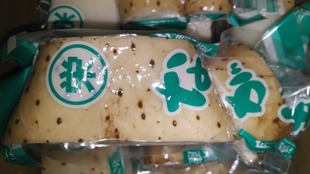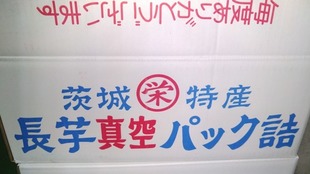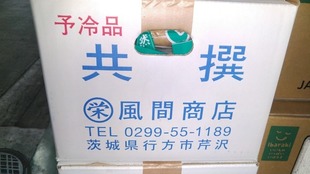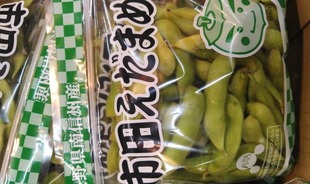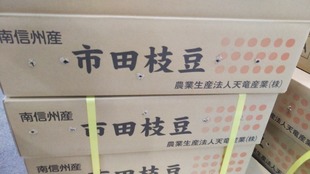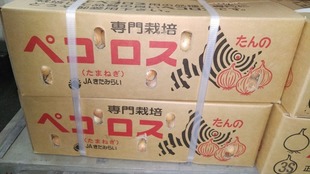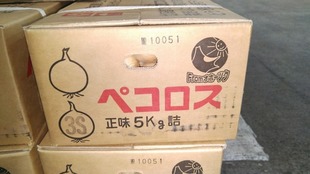【Product name】
Tomu Tomu(Fungus bed shiitake mushroom)【Type】
Lentinula edodes ‘Tomtom’
【Producing area】
Fujieda City, Shizuoka Prefecture, Yaizu City, Shimada City, Kawanemoto Town, Haibara District (JA Oigawa)
【Origin of name】
It is very delicate and can only be grown in the fall and winter, and even though it is grown in a greenhouse, it seems to be sensitive to weather conditions. It must have been named with affection and wishes for the producers, such as being able to do enough and being satisfied.
【Major features】
The character is a combination of JA Oigawa’s farmer’s market “Mansaikan” and the animal “Sai”. “Mansai-kun” is a shy and quiet rhino boy (5 years old). My dream is to spread local agricultural products all over the country. “Fujieda City, Shizuoka Prefecture”, It has the second largest population after Shizuoka City. It is located in the central part and has a long terrain from north to south. It is long from north to south, and the northern part borders the southern tip of the Akaishi Mountains and is blessed with abundant greenery. The Shida Plain spreads to the south, and the Seto River runs through the city. Very comfortable with abundant flowers, greenery and water. Pale violet, whose image color is mauve and is the flower of the city, is familiar to the citizens and is crowded with many people at the Wisteria floribunda festival. In an area that is also famous as a “soccer city”. An ancient burial mound that drives curiosity about ancient times. Akunami Shrine: Tradition and style founded during the Emperor Nintoku era (316). The remains of a government office that looks at the political culture of the Heian period in Nara. The history of the castle that changed the Lord to Sengoku era as Imagawa-Takeda-Tokugawa. During the Edo period, it prospered as the 21st and 22nd post towns on the Tokaido. It seems that the streets that are not much different from Fujieda inn and Okabe inn at that time will remain. Merged with Okabe Town, which has developed as a post town of tokaido, on January 1, 2009. Fujieda Zero to Agriculture Entry System (Purpose): Until now, in principle, only farmers and new farmers who have undergone certain training could rent farmland, but the purpose is self-sufficiency and purpose in life. For those who cultivate as a farmer or those who aim to become farmers, the “Fujieda Zero Farming Entry System” was established, enabling the establishment of leasehold rights of 10 ares or less for farmland in specific areas, and the use of idle farmland. It seems to try to prevent and eliminate the outbreak and promote new farming. Areas with a lack of bearers and a considerable amount of idle farmland, the lower limit of Fujieda City’s permission requirement under Article 3 of the Agricultural Land Law, which is 30 ares or more, has been relaxed to 1 square meter or more for each block. From May 1, 2021, the “Fujieda Zero to Agriculture Entry System” will start. Be a new farmer. Depending on your farming experience, resources, and ability, it seems that you can rent farmland of 10 ares or less. Local discussion for formulating Fujieda City regional plan (mid-September 2022): Agriculture is an important industry that produces food that is essential for daily life. It seems that the maintenance of good farmland has become an urgent issue. Under these circumstances, the city is working toward the formulation of regional plans (district plans that summarize the way of regional agriculture and farmland utilization methods) based on the partial revision of the Act on Promotion of Strengthening Agricultural Management Bases, etc. Discussions will start in mid-August. For each of the nine regions in the people and farmland plans announced by last year, it seems that discussions will be held sequentially regarding the background and purpose of the law revision, an explanation of the procedure for formulating regional plans, and the areas where agricultural use will be carried out. From the region, the chairman of the agricultural department and certified farmers attend, and it seems that opinions are being exchanged while looking at the current map of farmland use created by the people and farmland plan. In the future, the prefecture plans to ask each municipality to set up a model district, identify issues in the course of supporting the formulation of regional plans, and reflect them in the creation of guidelines for formulating plans. “Yaizu City”, Located in the southern part of the Shida Plain, which extends to the central part of the prefecture. It has a warm climate and is blessed with natural conditions such as abundant water originating from the “Oi River”. In the plains, in addition to rice, facilities vegetable, tomatoes, strawberries, chrysanthemums, etc., mainly open-field vegetables. In the mountains, we develop highly intensive agriculture such as tea and mandarin oranges. The strength of the proximity of production and consumption areas. Infiltrate local residents and develop agriculture where the face of producer can be seen from the perspective of local production local for consumption. In the industry, the fishery distribution and processing industry is thriving, and the quality and quantity are the highest in Japan. Along with this, the production of marine machinery and fishery processing machinery is also active, and it plays a major role in the city’s industrial sector. Yaizu Port: Katsuwonus pelamis and Thunnus are mainly landed as bases for pelagic fisheries. A generic term for the two ports of Kogawa, where horse mackerel, Morth Borneo, etc. are landed in the coastal waters: Yaizu fishing port. Oi-gawa Port where lucensosergia lucens, which can only be caught in Whitebait and Suruga Bay, is landed. Tokutei Daisanshu Gyoko (a specific third-kind fishing port or nationally important fishing port): A fishing port that is especially important for the promotion of the fishing industry. It boasts one of the largest landings in Japan. etc. A warm climate with an average annual temperature of 16.5 degrees Celsius and rare winter snowfall. The area is 70.31km2. Fujimori’s Taasobi rice planting ritual (May 17, 1977; Fujimori, Yaizu City). Most of the arable land in the city is flat land, 80% of which is rice paddy. The main brands are Koshihikari rice, Aichi no Kaori rice, and Kinumusume rice, and rare varieties such as ancient rice (red rice, black rice) and Milky Queen rice are also produced in the prefecture. In recent years, the cultivation of Homare Fuji, a sake rice variety developed in Shizuoka Prefecture, has become popular, with Yaizu City boasting 60% of the production in the prefecture. Producers in the city have set up the “Yaizu sake rice study group” and are actively promoting it, so please refer to it. In 1966, tomatoes were designated as a production area by the Japanese government. It seems that they mainly produce Momotaro tomatoes, but also cherry tomatoes, medium tomatoes, and high sugar content tomatoes. It seems that strawberries began to be cultivated in Shizuoka around the early Meiji period. In Yaizu City, Shizuoka varieties such as Beni Hoppe and Kirapika Strawberries are mainly cultivated, and it seems that about half of the production in the Shita area is cultivated in Yaizu. Melons are cultivated in a greenhouse where temperature and humidity are controlled. It seems that the sugar content is high at the peak season from the old Bon in July to the lantern festival in August. Pears grown in the Shida area are widely known as “Shitarashi”. The main varieties are Shinsui Pear, Kosui Pear, and Hosui Pear. In 1978, Kiyoji Matsunaga of Kozuchi, Yaizu City developed a seedling called “Kisui Pear” by crossbreeding “Hosui Pear’ with “Meigetsu Pear” in 1978. Selected and grown from fruit-bearing fruits. After that, after research and confirmation of characteristics with the cooperation of Shizuoka Prefecture Citrus Experimental Station, registration application was made in 1988, and the variety was registered in 1990. The name at the time of application was “Seiryu.” It has become a pear.)”. As for mandarin oranges and tea, citrus fruits such as unshu mandarin oranges, ponkan, harumi, and shiranui are produced in the mountainous areas centered on Mt. Takakusa. In addition, tea is cultivated mainly in Yabukita in some of the mountainous slopes. A variety of vegetables are grown both outdoors and in greenhouses, such as cabbage, lettuce, green onions, cucumbers, and celery. Various varieties of flowers such as chrysanthemums, roses, and flower bed seedlings are cultivated. Chrysanthemums have a long history of cultivation, and are said to have started right after the war. Spray chrysanthemums are cultivated, mainly single chrysanthemums. Flower bed seedlings are full of various varieties, including petunias, pansies, and daily grasses. Poultry farming and dairy farming are being managed in an environment-friendly manner due to the progress of urbanization and mixed living. As for the eggs, they are pursuing better quality through branding. Dairy farming seems to be based on fresh raw milk production in a hygienic environment. This is the most difficult situation for dairy farmers. I would like to ask you to take measures as soon as possible. City Promotion Shimada City Green Tea Plan: Green tea from Shimada City, which grows and processes distinctive tea leaves and is highly evaluated not only in the city and prefecture but also nationwide. The city is promoting this as a promotion measure that utilizes the image of green tea. An initiative to pick up the individuality and charm of the city and use the logo mark of the green tea plan and the image color “green tea green” to disseminate it to the outside of the city. Conducted on “the first weekday of every month” from November 1, 2018. In tea producing district Shizuoka Prefecture, the characteristics of tea leaves differ depending on the topography and weather conditions of the cultivated area. Also, the color and taste of the tea you make will change depending on how you process the tea leaves. There are three typical cultivated areas in Shimada City: “Shimada Tea”, “Kanaya Green tea (former town name in Haibara District, now occupying the western part of Shimada City)” and “Kawane Tea (Kawane Town, Haibara District)”. And Kawanehoncho (formerly Nakakawane Town and formerly Motokawane Town) ”. Yui Area Shimada City , Surrounded by mountains, the daylight hours are short, and the temperature difference between day and night and the soft morning dew surround you. It is an environment blessed with the growth of tea(A gem brought up by nature. ). The taste and aroma of Shimada tea is one of the best among the many Shizuoka teas. In 2013, a tea offering to the gods business will be held in the city for new tea to imperial households. In connection with that, a tea plantation in the yui district was designated. A park with a futsal(five a-side)ground for raw turf: Shiroyama Park; At the rural park maintained on the site of the visitor center at Mt. Fuji Shizuoka airport. The local community association plays a central role. Unique to the Yui area. It is always managed by local residents and is also used as an event venue for the Tanabata Festival and connectedness Festival. Guinness certified “the longest wooden pedestrian bridge in the world” : Horai Bridge(H9, Certified in December. Agricultural bridge built in 1879.)(Farm road: 土地改良法, 昭和二十四年, 法律第百九十五号: Ministry of Agriculture, Forestry and Fisheries.)A farm road bridge with a total length of 897.4 m that connects the “Makinohara plateau” and the city. It is known as one of the leading tea gardens in Japan. Before it was possible, he had to cross the Oi River by a small boat, and it was dangerous to come and go. It is still used by farmers in the old city to manage the tea plantations on the opposite bank. In July 1869, the shoguns who escorted the last shogun Yoshinobu Tokugawa: He pioneered Makinohara in Hatsukura on the right bank of the Oi River and started making tea. The reclaimers at the Shimada inn make a wish to bridge the Shizuoka county magistrate (current governor) of the time. It was approved and the Horai Bridge was completed on January 13, 1879. However, due to the wooden bridge, it has been damaged every time the Oi River rises. It was changed to a concrete pier in April 1965 and becomes what it is today. High-brightness LED lighting equipment was installed in March 2003. As the sun sets, green light reveals the outline of the bridge, creating a fantastic space. It is said that the citizens are familiar with it as a wooden bridge that is integrated with the nature of the Oi River. It has appeared on the stage of Historical play, Televised drama and suspense, and recently on Variety show, and is known all over the country. It is one of the few rented bridges nowadays, and you pay a toll to the “Hashiban” at the foot of the bridge before crossing. March 20, 2018: Product sales office “Horai Bridge 897.4 tea dealer” opened on the left bank of Horai Bridge. Closed from Saturday, April 18, 2nd year. Business hours will be shortened from May 22nd (Friday) to November 19th (Thursday). Business resumed near normal from Friday, November 20th. The Horaibashi bon bon festival is held every May, and the bridge is expected to be decorated with many bonbons and various events will be held. “Shimada City, Shizuoka Prefecture”, It is located in the center of Shizuoka prefecture.To the north are the mountains leading to the Southern Alps. The lush Makinohara Plateau extends to the southwest. The Oi River, which originates in Southern Alps and flows into Suruga Bay, runs through the city. The city is about 23 km east-west and about 31 km north-south. The area is 315.70 km2. On May 5, 2005, former Shimada City and the former Kanaya Town, Haibara District merged. Then, on April 1, 2008, City merged with Kawane Town Haibara District. The hills and mountains of the Ikumi, Aigatani, and Otsuya river basins on the left bank of the Oi River are wide and have valley bottom lowlands. The top of the Oi River alluvial fan also has a gravel lowland, and the old river channel is also distributed. Okadahara and Iroo terraces on the Makinohara plateau in the south. The Oi River flows through a wide riverbed in a network. Northern mountains: Mudstone / weathering process of sandstone in the mikura group. Shale sandstone alternating layers and basaltic pyroclastic rocks of the Setogawa Group. Eastern mountains: The shale and sandstone of the Oigawa Group are distributed. The Gravel layer on the makinohara plateau on the right bank of the oi river is based on the Oigawa and Sagara groups. Thick gravel layers are deposited on the alluvial fan. The average annual temperature is estimated to be about 15.0 ° C, and the average annual rainfall is about 2,271 mm. The temperature difference between flat land and mountainous land is large, and in winter, the air wind tends to blow down from the plateau. Precipitation is slightly less than the average in prefecture, with about 50% of total precipitation expected from spring to summer (April to August). The feature that it is easy to amplify the ground vibration at the time of an earthquake. Be careful about the collapse of houses and the spread of fire due to a fire. On slopes, there is a high possibility of collapse or landslide due to earthquake motion. Flooded water may flood the crops for a long period of time, damaging the crops.3rd Sunday of September: Shimada Mage(Toro-bin shimadamage (Mid-Edo Period; Worn by, originally, yujo, and then young women of townspeople). Tsubuichi: A variation of Shimada mage. of Japanese hairstyles, a simplified form of the Shimada coiffure, called ‘kusatabane’. Yuiwata (tied cotton): it is tied by Tegara at the folding back of Shimada Mage. This hairstyle lasts from the Edo Period until today. In case of a full-fledged senior geigi, they primarily wore their hair in the shimada mage, kimono with train and tsume sode, and mizu oshiroi (powder foundation with water). )Matsuri Festival (Shimada City, Edo period). “Goober”, Experience type food park ”kadode ooigawa” : R2. Served as peanut gelato at the farm restaurant “Da Monde” scheduled to open on November 12th. In response to a request from the producer, it took about two years to commercialize it in collaboration with the facility. “Is there a product that makes peanuts a specialty? I want to process it and have more people taste it” : To commercialize the specialty peanuts. It’s peeled, roasted, blended and mixed with white-based gelato. There are two types, deep roasted and light roasted, both of which are said to have a sufficient flavor. I definitely want to taste it. I’m glad to have such a wonderful thing. I want you to know the charm of peanuts with this as an opportunity: Voice of the producer who tasted it. “Omasari” is about twice the size of general varieties, and the yield is more than 1.3 times, and it seems that it is about 900 kg per 10 ares. In fact, it is soft and suitable for “boiled peanuts”, and it is popular because it is sweeter and tastier than conventional varieties. From the Ministry of Agriculture, Forestry and Fisheries variety registration website, the variety name at the time of application publication Application number 21228 Application date 2007/07/05 Application publication date 2007/12/04 Registration number 19305 Registration date 2010/03/16 Breeding Duration of breeding rights 25 years Extinction date of breeder’s rights Chiba Prefecture (Ichiba Town, Chuo Ward, Chiba City, Chiba Prefecture): Names of those who bred registered varieties Yoshiharu Iwata, Hiroyuki Kiyoshima, Hasegawa Makoto, Takashi Matsuda, Kazuo Suzuki, Hisao Sora, Yukari Shinbori, No designated countries with restrictions on exports. The plant type is intermediate type II, the main stem length is medium, the branch length is medium, the leaflet shape is long, the leaf color is light green, the flower color is yellow, the pod length is quite long, the pod width is wide, 1 The number of grains in the pod is small, the grain shape is slightly long, there is no spot on the seed coat, the color of the seed coat is light orange-brown, the grain weight is large, the flowering period is medium, the maturity period is late, and the lodging resistance is weak. The crude fat content is low, and the resistance to stem rot is weak. The application cultivar “Omasari” is distinguished from the control cultivar “Nakateyutaka; 中手豊(A large variety developed in Yachimata City, Chiba Prefecture in 1979, it is characterized by its light and sweet taste. Since it is harvested earlier than Chiba Handachi, it is also called an early-maturing variety, and new beans tend to hit the market sooner. )” in that the main stem length is medium, the grain weight is large, and the crude fat content is low. Is recognized. Compared to the control variety “Chiba Handachi(The “middle-sized seed” discovered by Ginjiro Kubo at Honda Mankadai, Chiba District (currently Honda Town, Midori Ward, Chiba City) is said to have become a recommended variety in 1953. It has a good taste and seems to be still cultivated as the highest quality brand product of the peanut kingdom Chiba. It has the characteristic that the flower stock spreads widely, and it seems that it was named after the state where only about half of the flowers stand up.)”, it is said that distinction is recognized by the fact that the main stem length is medium, the grain weight is large, and the crude fat content is low. An Okute variety that was bred at the Chiba Prefectural Agricultural Research Center in 2006 by crossing Nakate Yutaka with the largest grain variety “Jenkins Jumbo”. The variety was registered in 2010. Again, it is a peanut that weighs about twice as much as a general variety. Suitable for boiled peanuts, it has a strong sweetness and is soft, and tends to have an excellent taste. It seems that it has been cultivated in general since 2009. It has been cultivated in Okinawa Prefecture for a long time in Japan, and it is said that it was transmitted from China to Honshu in 1706. However, it seems that it was not cultivated. It is said that the current cultivation in Japan is the first time that the government introduced seeds from the United States in 1874 and distributed them to various places and recommended cultivation, but in 1872, Keijiro Watanabe(1841-1914: In 1873, two years after his cultivation in Terasaka, Kokufu Village, Naka District, a man named Shobei Futami (Azuma Village, present-day Ninomiya Town) from the neighboring village ordered seeds separately from Yokohama and cultivated them. When he was around the age, he gave it to his neighbors and cultivated it extensively. In 1882, by chance, a plant of a different kind appeared in Shobei’s field. This is the peanut of today and seems to be the origin of Soshu peanut. Until then, peanuts seemed to have been difficult to cultivate because of their “puffiness”. Today’s peanuts are improved varieties of “Standing ability: The ability of a plant to grow upwards so that its branches and stems can stand upright.” peanuts discovered by Shobei, and without this discovery it seems that today’s peanut production would not have expanded.)of Kanagawa Prefecture obtained the seeds. It seems that they are starting to grow. The scientific name of peanuts is Arachis hypogeae L. Arachis hypogeae. Arakis is the genus name, Hipogea is the species minor name, and L. is the namer, in this case Linnaeus, the father of taxonomy. The name is given to the cultivated species, and it is a well-known fact that peanuts are not wild species like corn. It seems that the wild species that originated have an approximate estimate. Kawanehon-cho Haibara District: Located in the central part of the Prefecture, Shizuoka City is in the east. It is adjacent to Shimada City in the south and Hamamatsu City in the west. The north is the prefectural border with Nagano Prefecture.The town area is about 23 km east and west along the Oi River: It is elongated about 40 km north and south, and forests occupy about 90%. The range of the village is 15 km east-west and 20 km north-south. Blessed with tourism resources, the foothills of the southern part of South Alps and the avant-garde mountains weave: In addition, Sumatakyo hot spring and Sessokyo hot spring are scattered in the beautiful scenery. There are many places where you can come in contact with nature, such as campsites and hiking trails.In addition, South Alps Abt- Line, which has Japan’s only Abt- system railway(A cog railway system used on a steep hill): Also known is the Oigawa-Railway where SL runs every day. Tea plantation spreads across the Oigawa River in the Kawane green tea(Famous Tea)producing area. Oigawa Japan Agricultural Cooperatives: ‘Goober’, Experience type food park ‘kadode ooigawa’ : R2. Served as peanut gelato at the farm restaurant “Da Monde” scheduled to open on November 12th. Kawanehoncho Agriculture and Forestry Center: Established in 1963 as a base for regional industrial development and modernization. Initially, the company was also involved in the production of seedlings for planting and the supply and raising of pigs for the promotion of livestock farming. As such, it seems that various demonstration tests are being conducted on the production of tea seedlings necessary for replanting old tea gardens, cultivation technology, new technology, etc. (anti-frost facilities, various plucking machines such as riding machines). In particular, the center has made great achievements in breeding excellent varieties of tea. The mature leaves are large and oval, and the leaf color is glossy dark green. New shoots in the plucking season are heavy shoots, and the yield is comparable to that of ‘Yabukita tea.’ Cold resistance is red. It is more resistant to withering and tearing frost damage than ‘Yabukita tea’, and since it is a late maturing variety, it is easy to avoid frost damage. It seems to be very weak against L.) Kuntze; “Yabukita tea” has a unique aroma that is different from “Yabukita tea”, and its light blue color is bright, strong and extremely good. It is a Wase variety that is four to five days earlier than Yabukita green tea and has a slightly upright tree shape with extremely strong tree vigor. The mature leaves are elliptical with a slightly shorter tip and leaf color. The buds are green. The buds are well aligned during the plucking period, and the weight of 100 buds is slightly smaller. The yield is comparable to that of ‘Yabukita tea’, and the cold resistance is strong against red wilt, and is resistant to anthracnose. Although it is a little stronger than ‘Yabukita tea’, it seems to be as weak as ‘Yabukita tea’ against damping off and mulberry scales. It seems that the internal quality is very good. In particular, it has a light scent that makes you feel the fresh green, and it seems that you can feel enough umami with little astringency. In terms of chemical composition, amino acids, which are said to be umami ingredients, It seems to have a high theanine content and a low content of catechin, which is an astringent component.)”, it is no exaggeration to say that today’s status was established through the cultivar selection project at the same center. In addition, in order to support the development of core farmers through combined management with tea, it seems that they are also producing Japanese yam and wasabi seedlings. In 1980, as a training ground for agricultural successors, a tea industry technical training center equipped with a tea factory and soil analysis room was established. We are open to the public at the local resource general exchange utilization facility where we conduct training on pot roasted tea for people. In the same JA jurisdiction area, there is a case of building a high sugar content tomato brand (Amera Tomato), which rationally expresses high technology and quality, creates a high sugar content tomato market, and acquires wide recognition and a high brand image. Amera tomato is cultivated by “Honey Ponic”, a hydroponics system that applies root zone limited cultivation (cultivation method that restricts root elongation and creates a compact tree shape) developed by Shizuoka Prefectural Research Institute of Agriculture and Forestry in 1994. It is a high sugar content tomato that is used. In 1996, three producers in Yaizu City, Shizuoka Prefecture (former Oigawa Town) started cultivation. Production is carried out at three large-scale facilities (total area of 16.1 hectares) located in Nagano Prefecture and Nagano Prefecture, and is still expanding. In addition, since the production area is located in a warm area along the sea and a cold highland along the mountain, year-round cultivation and shipment are carried out taking advantage of the difference in temperature. The main variety is “Momotaro York Tomato”, which has excellent high-temperature fruit setting. In the cultivation conducted by Honey Ponic Co., Ltd., by limiting the amount of watering to the utmost limit, high sugar content and components are accumulated in the fruits, so the fruits during the harvesting period are 3% compared to conventional cultivation (220 to 230 grams per fruit weight). It seems to be about the size of a third. Last year, on October 22nd, the JA Oigawa Fruits and Forest Products Association raw shiitake committee held a meeting at the same JA Asahina collection point in Fujieda City in order to standardize the quality before full-scale shipment. 10 members of the department participated and decided the shipment standard based on the size, opening, color, and degree of deformation of the shiitake umbrellas brought in. We started shipping the next day, the 11th, and planned to ship 7,000 kg by March. In addition, the group cultivates about 5,000 to 20,000 mushroom beds weighing 1.3 to 2.5 kg with 10 people. Then, it is shipped to mass retailers and “KADODE OOIGAWA” through markets inside and outside the prefecture. In 2021, the outbreak was delayed by about a week due to the high temperature in early October, but the high quality is maintained at the same level as in normal years. Umbrellas began with large umbrellas of 6.5 cm or more in size, and from around January, they shifted to medium-sized umbrellas of less than 6.4 cm. “Tomtom mushrooms” Tomtom shiitake is a special produce that is thick and large. Tom tom, which begins to be harvested in late fall, is a rare variety with few growers in Japan. It is a seasonal product that is only available for a limited time (only once a year in the fall), and because it is cultivated under natural conditions, it has a firm texture and an unforgettable flavor. Among them, Mori Sangyo Co., Ltd. (located in Nishihisakata Town, Kiryu City, Gunma Prefecture, established in April 1943) developed and nurtured Mori no Tom Tom (ML8) shiitake mushrooms. Natural cultivation occurs, the temperature range is 10 ℃ ~ 20 ℃, and the cultivation schedule seems to be characteristic. It is large, has firm flesh, and has a long shelf life. Also, the market seems to be trading at high prices.

Mushroom bed Shiitake mushrooms are a masterpiece of food revolution. Sawdust is solidified, seed coma is placed on blocks (fungal bed) about four sides, and germination is promoted in a dark room with high humidity. By artificially providing nutrients, it is possible to harvest one after another in a cycle of 3 to 6 months, so producers can expect to be shipped all year round. In addition, it is possible to harvest in a shorter period of time than log cultivation. However, once the mushroom bed is harvested, it seems necessary to dispose of it as industrial waste at a cost. The amount of waste mushroom bed is 2-3 times (weight ratio) of harvested mushrooms. There seem to be plenty of advantages in terms of.

It seems that the work of removing unnecessary buds is essential. With the stimulation of opening the filling bag, shiitake sprouts will emerge from the mushroom bed in a few days. If you don’t do this, all the shiitake mushroom inoculum on the fungus bed will turn into shiitake mushrooms, and mold will easily grow on them. Originally, shiitake mushrooms have the power to keep other fungi (molds) away, but it seems that the risk of mold growth increases as the number of shiitake mushrooms decreases. Also, in order to keep the temperature and humidity in the greenhouse constant and to keep pests away, it seems that they take the time to wash and keep the mushroom bed clean during the “flooding” necessary for shiitake mushrooms to grow. After harvesting, the fungus bed is usually left to rest for a month before being submerged in water to regenerate shiitake mushrooms. Furthermore, by staggering the start of cultivation of the fungus bed, it seems that they are creating a system that can be shipped throughout the year.

Bounded between the Southern Alps to the north and Suruga Bay to the south, JA Oigawa is rich in nature. Tea, bamboo shoots, and shiitake mushrooms are grown in the mountains, and tomatoes, lettuce, and strawberries are grown in the plains. The farmer’s market “Mansaikan” seems to offer safe, secure and fresh local products cultivated in each region. Opened as a place for communication between consumers and producers, there are many processed products such as pickles and side dishes in addition to agricultural and livestock products such as vegetables, meat, rice and flowers that the producers have grown with great care. In addition, the “Autumn Minori Market” has started on October 31, 2022 at JA Oigawa Fujieda Factory in Horinouchi, Fujieda City. It is planned to be held until November 5th as part of the “Autumn Appreciation Sale,” which is currently being held to offer tea at a discounted price.
